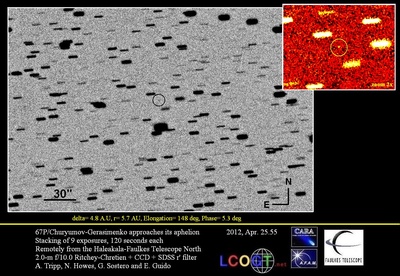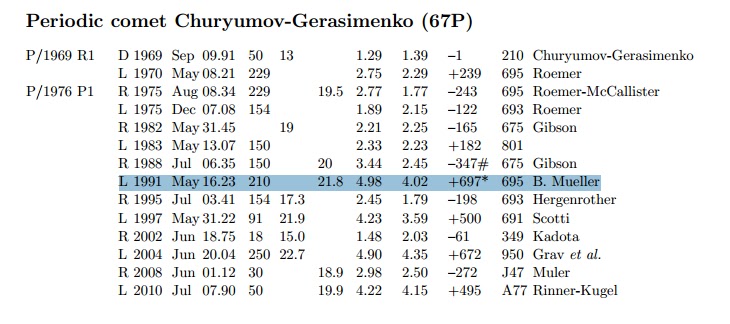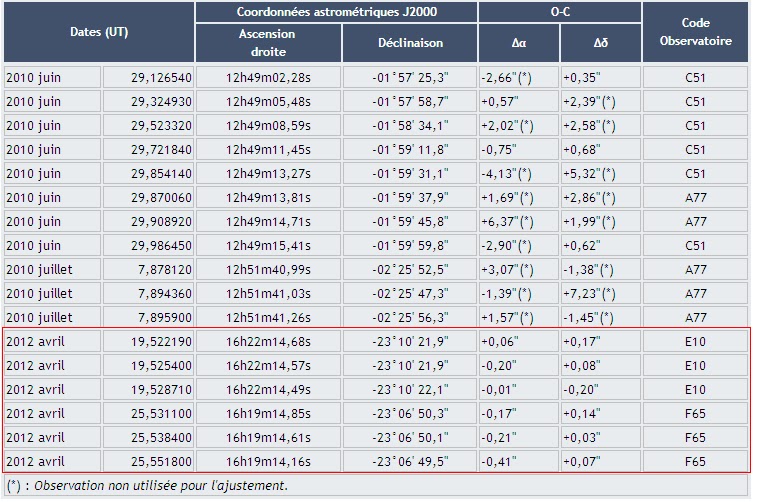First images of Comet 67P close to its aphelion
Faulkes Telescope Pro-Am Programme Manager Nick Howes had put forward a detailed plan for long term observations of the comet 67P, using the twin Faulkes 2m telescopes based in Hawaii and Siding Spring. The proposal challenge was picked up by Faulkes Telescope user Richard Miles, who managed to image the comet on April 19th using Faulkes South (E10 mpc code), and by our Team using Faulkes North (F65 mpc code).
Stacking of 18 R-filtered exposures, 120-sec each, obtained remotely, from the Haleakala-Faulkes Telescope North on 2012, Apr.25.5, through a 2.0-m f/10.0 Ritchey-Chretien + CCD, under good seeing conditions, shows that comet 67P has a stellar appearance, with R magnitude about 22 (limiting magnitude in our field of R about 22.5). At the moment of our image the comet was at roughly 5.683 AU from the Sun.
Before these observations using the Faulkes Telescopes, the comet 67P was last observed on July 2010. While our previous last observation of this comet dates back to 2010, March 08 when it was at 3.60 AU from the Sun.
To date, our observation of 2012, Apr. 25.5 is the farthest known observation of comet 67P taken by a ground-based observatory. According to "Periodic Comet Extreme Observations" by Jim Scotti, the previous farthest observation of comet 67P was by B. Mueller (mpc code 695 Kitt Peak) that imaged it on 1991 May 16.23 when the comet was at 4.98 AU from the Sun (click on the image below for a bigger version).
Below you can see the residuals for the Faulkes (E10 + F65) obs calculated by the "Institute de Mécanique Céleste de Calcul des Ephémérides" using all the observations of comet 67P available in the archive (click on the image below for a bigger version).
These follow-up observations are important in several ways: they are helpful to refine comet's 67P orbital parameters, in the perspective of its future encounter with the "Rosetta" spaceprobe. Moreover, the data recently collected through the Faulkes telescopes, might also shed some light on the current activity of the comet's nucleus, that is approaching its aphelion (farthest distance from the Sun, well beyond the orbit of Jupiter).
by Nick Howes, Giovanni Sostero, Alison Tripp and Ernesto Guido


